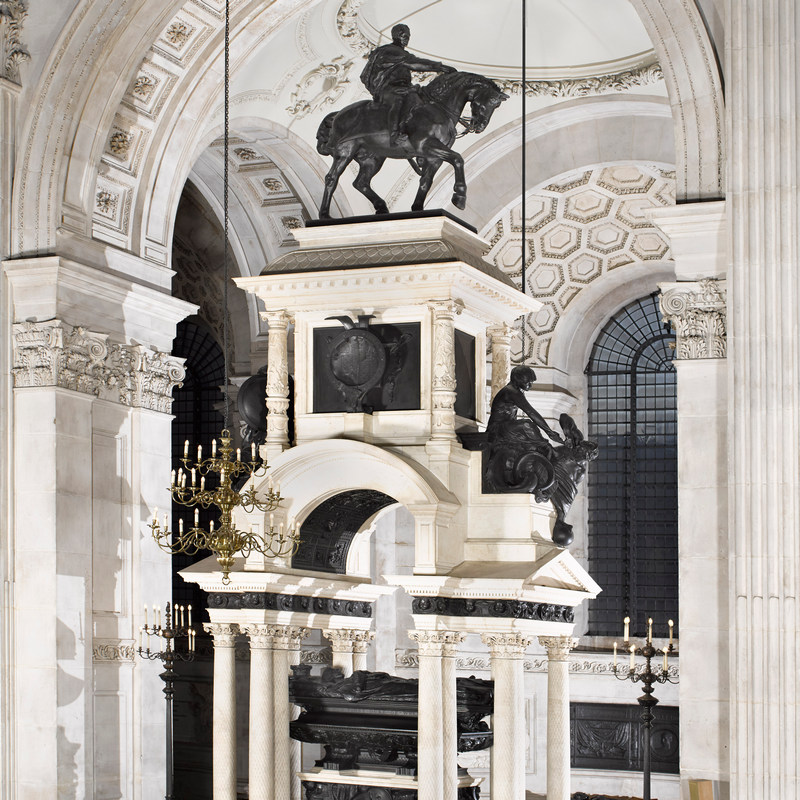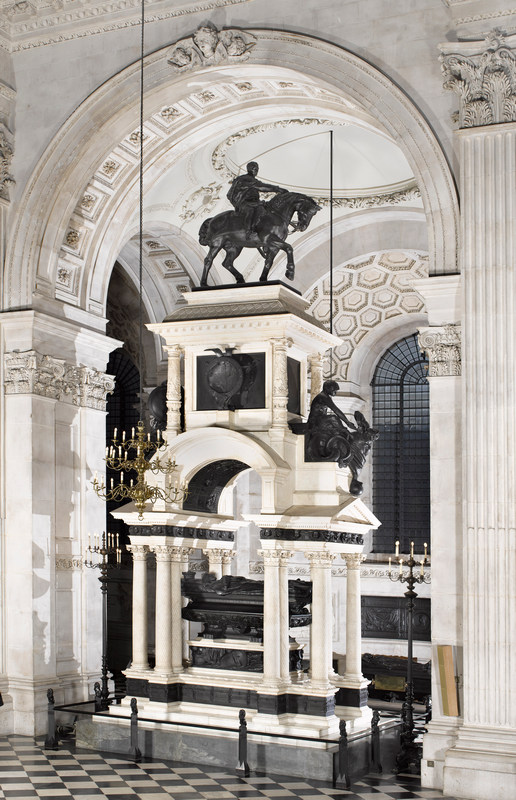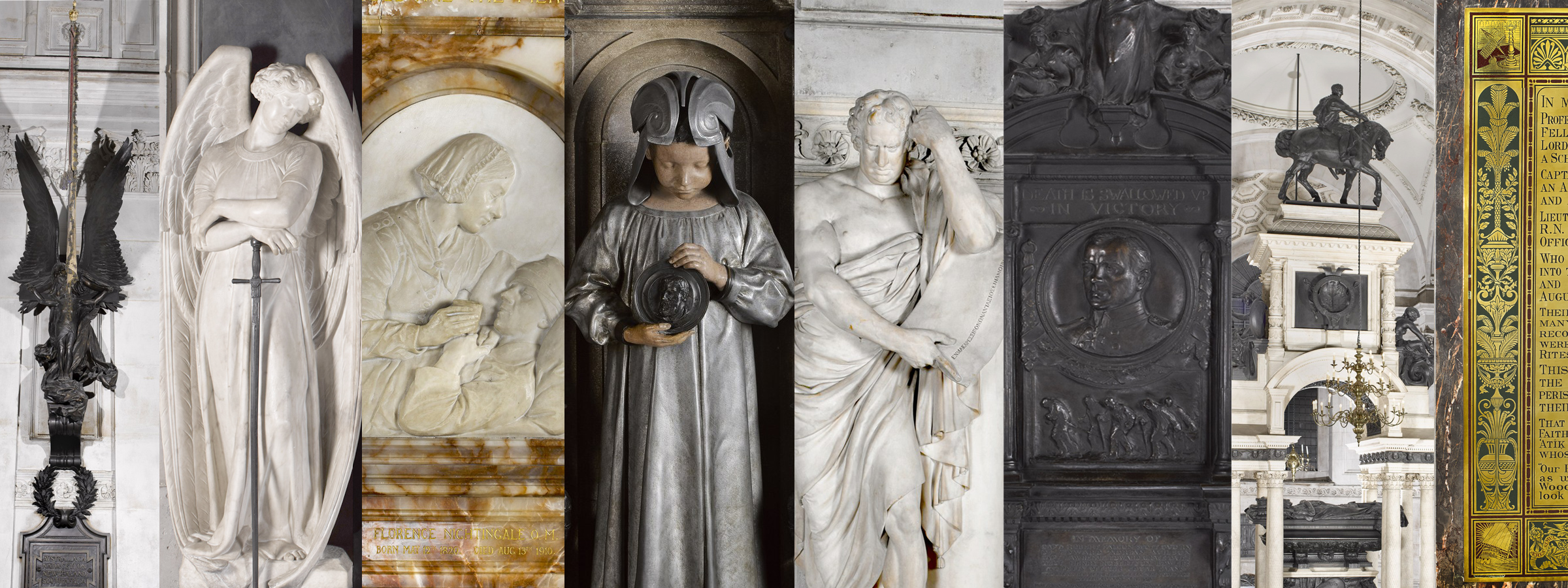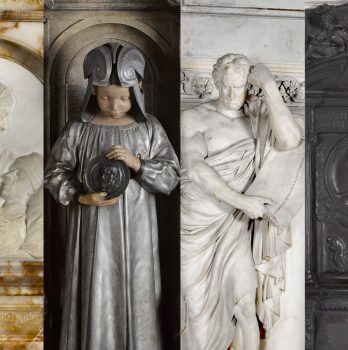‘Wellington Monument’: Stephen Switzer of Waterloo Uncovered Responds to the Monument to Arthur Wellesley, 1st Duke of Wellington (1769–1852) by Alfred Stevens & John Tweed, c. 1857–1912


Wellington Monument
By Stephen Switzer
The duke commands… as he did in life
This time your attention
Spanning the north aisle he towers
Like an atlas of determined intention
Spanning the visitors’ hours
An epic construction
Arthur Wellesley sits mounted on top
His black horse calm as he surveys
The tourists, guides and the rest of the crop
The numerous hoi polloi and their ‘plebian’ ways
Below his horse a massive plinth
Stands a solid arch on columns doric seen
Valour versus cowardice engaged in strife
Showing the battle between…
And truth versus falsehood the struggles of life
Beneath a Triumphal arch lofty
In effigy bronze our hero lays out
Above a pile of sculptured spoils, cannons, shields
seemingly scattered about
In his massive sarcophagus a virtual power he still wields
Dominating the Cathedral
Like the Spanish fields he did of old
The man with the coup d’œil feel
Stands out still and bold
His presence solid as steel
So when, dear visitor, you depart
And the outside world beckons you well
Spare for the man on the horse
And the men he led through shock and shell
A thought as your existence continues its benign course

About Stephen Switzer
Stephen Switzer served in the Royal Corps of Signals of the British Army from 1977 to 1989. He is currently a volunteer with the charity Waterloo Uncovered, which has been taking veterans and serving personnel to the battlefield of Waterloo , since 1915, to undertake a programme of archaeology and welfare support. In recent years, Stephen has developed his interest in creative writing. This is his first published poem.
About the Monument
Following Wellington’s death in 1852, the State held an international competition for a design for a memorial at St Paul’s Cathedral, where Wellington was also interred. The contract was awarded to Alfred Stevens (1817–1875), although he was only placed joint fourth in the competition, because his design was deemed the most suitable for the cathedral space.
The project was so ambitious that Stevens was unable to complete it during his lifetime. His former apprentice, assistant and friend Hugh Stannus (1840-1908) took the work forward, to Stevens’ design, apart from the equestrian portrait of Wellington, which was created by John Tweed (1869–1933). The monument was finally unveiled in 1912, 37 years after Steven’s death and sixty after Wellington’s.


